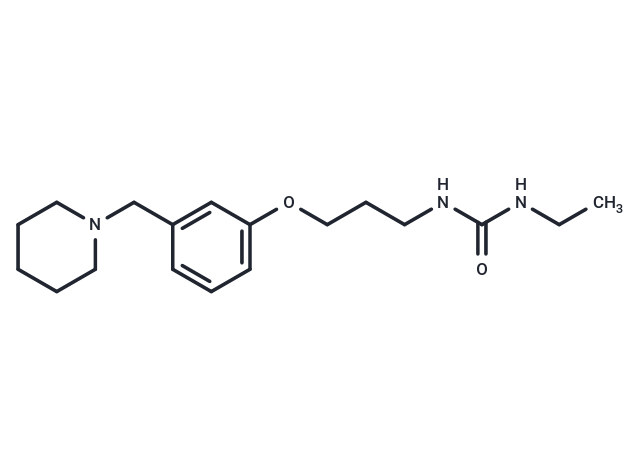Shopping Cart
- Remove All
 Your shopping cart is currently empty
Your shopping cart is currently empty

Dalcotidine (KU 1257) is a novel histamine H2 receptor antagonist with histamine H9 receptor antagonistic activity and antisecretory effects.The Ki value for binding to guinea pig cerebral cortex was 0.040 The KB value for antagonism of histamine-induced positive chronotropic responses in the right atrium of isolate guinea pigs was 0.041.Dalcotidine improves the quality of ulcer healing, and may contribute to a reduction in ulcer recurrence and relapse rates.

| Pack Size | Price | Availability | Quantity |
|---|---|---|---|
| 1 mg | $86 | In Stock | |
| 5 mg | $216 | In Stock | |
| 10 mg | $318 | In Stock | |
| 25 mg | $515 | In Stock | |
| 50 mg | $747 | In Stock | |
| 100 mg | $1,050 | In Stock | |
| 200 mg | $1,420 | In Stock | |
| 1 mL x 10 mM (in DMSO) | $215 | In Stock |
| Description | Dalcotidine (KU 1257) is a novel histamine H2 receptor antagonist with histamine H9 receptor antagonistic activity and antisecretory effects.The Ki value for binding to guinea pig cerebral cortex was 0.040 The KB value for antagonism of histamine-induced positive chronotropic responses in the right atrium of isolate guinea pigs was 0.041.Dalcotidine improves the quality of ulcer healing, and may contribute to a reduction in ulcer recurrence and relapse rates. |
| Targets&IC50 | H2 receptor:0.04 mumol/l |
| In vivo | Dalcotidine (10-50 mg/kg x 2/day; oral; rats)markedly promoted the well-balanced healing of gastric ulcers, as evidenced by the reduction of ulcers, regeneration of mucosa and proliferation of connective tissue. Dalcotidine caused an increase in gastric mucus secretion in the regenerated mucosa around the gastric ulcers. Dalcotidine is characterized by a potent promoting action on the healing of chronic ulcers, suggesting that the increase in gastric mucus secretion might be associated with the antiulcer actions of Dalcotidine in part.[2] |
| Alias | KU-1257, KU 1257 |
| Molecular Weight | 319.44 |
| Formula | C18H29N3O2 |
| Cas No. | 120958-90-9 |
| Smiles | C(C1=CC(OCCCNC(NCC)=O)=CC=C1)N2CCCCC2 |
| Relative Density. | 1.075g/cm3 |
| Storage | Powder: -20°C for 3 years | In solvent: -80°C for 1 year | Shipping with blue ice. | ||||||||||||||||||||
| Solubility Information | DMSO: 3.6 mg/mL (11.27 mM), Sonication is recommended. | ||||||||||||||||||||
Solution Preparation Table | |||||||||||||||||||||
DMSO
| |||||||||||||||||||||

Copyright © 2015-2025 TargetMol Chemicals Inc. All Rights Reserved.